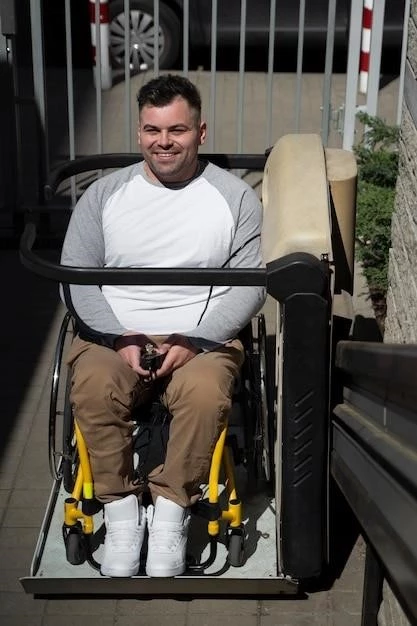Overview of Paraplegia-brachydactyly-cone shaped epiphysis
Fitzsimmons-Guilbert syndrome is a rare genetic disease characterized by spastic paraplegia, brachydactyly, and cone-shaped epiphyses․ Learn more!
Definition and Description
Paraplegia-brachydactyly-cone shaped epiphysis syndrome, also known as Fitzsimmons-Guilbert syndrome, is an extremely rare genetic disorder characterized by spastic paraplegia, skeletal anomalies like brachydactyly, and cone-shaped epiphyses․ This syndrome presents with a unique combination of symptoms affecting mobility and skeletal structure․

Symptoms and Clinical Presentation
Patients with Paraplegia-brachydactyly-cone-shaped epiphysis syndrome may present with spastic paraplegia, brachydactyly, and cone-shaped epiphyses, affecting mobility and skeletal structure․
Spastic Paraplegia
Spastic paraplegia is a key symptom of Paraplegia-brachydactyly-cone-shaped epiphysis syndrome, characterized by slowly progressing leg weakness, muscle stiffness, and spasms affecting mobility․
Brachydactyly
Patients with Paraplegia-brachydactyly-cone-shaped epiphysis syndrome often exhibit short fingers and toes, known as brachydactyly, which can impact hand and foot function․
Cone-shaped Epiphyses
Individuals with Paraplegia-brachydactyly-cone-shaped epiphysis syndrome often display cone-shaped epiphyses, a skeletal abnormality affecting the ends of bones, particularly noticeable in the hands and feet․
Causes and Risk Factors
The exact cause of Paraplegia-brachydactyly-cone-shaped epiphysis syndrome is unknown, but it is believed to have a genetic basis․ The syndrome manifests as a rare genetic disorder affecting mobility and skeletal structure․
Genetic Factors
The Paraplegia-brachydactyly-cone-shaped epiphysis syndrome is believed to have underlying genetic factors as the main cause of this rare disorder․ Researchers are studying the genetic basis to better understand the syndrome’s pathogenesis and inheritance patterns․
Environmental Influences
Although Paraplegia-brachydactyly-cone-shaped epiphysis syndrome is primarily linked to genetic factors, environmental influences may also contribute to the development of this rare condition․ Further research is needed to understand the potential environmental triggers associated with the syndrome․
Diagnosis and Differential Diagnosis
Diagnosing Paraplegia-brachydactyly-cone-shaped epiphysis includes evaluating symptoms like spastic paraplegia, brachydactyly, and cone-shaped epiphyses․ Differential diagnosis may involve ruling out other genetic or environmental causes of similar symptoms․
Imaging Studies
Imaging studies play a crucial role in diagnosing Paraplegia-brachydactyly-cone-shaped epiphysis, particularly by revealing the characteristic skeletal anomalies like cone-shaped epiphyses, aiding in differentiating this syndrome from other conditions with similar presentations․
Genetic Testing
Genetic testing is paramount in diagnosing Paraplegia-brachydactyly-cone-shaped epiphysis, helping identify specific genetic abnormalities associated with this rare syndrome; By analyzing the patient’s genetic makeup, healthcare professionals can confirm the presence of genetic factors contributing to the condition․
Treatment for Paraplegia-brachydactyly-cone-shaped epiphysis focuses on managing symptoms through a multidisciplinary approach to address mobility challenges and provide symptomatic relief for patients․

Treatment and Management
Managing Paraplegia-brachydactyly-cone-shaped epiphysis involves a multidisciplinary approach, combining interventions to address spasticity, mobility issues, and skeletal anomalies․ Symptomatic relief techniques are utilized to enhance the quality of life for individuals affected by this rare syndrome․
Symptomatic Relief
Treatment and management strategies for Paraplegia-brachydactyly-cone-shaped epiphysis focus on providing symptomatic relief to individuals affected by this rare genetic syndrome․ By addressing spasticity, mobility challenges, and skeletal anomalies, healthcare professionals aim to improve the quality of life and enhance daily functioning for patients with this condition․
Prognosis and Complications
For individuals with Paraplegia-brachydactyly-cone-shaped epiphysis, the long-term outlook depends on symptom management․ Potential complications may arise due to mobility challenges and skeletal anomalies associated with this rare genetic syndrome․
Long-Term Outlook
Individuals with Paraplegia-brachydactyly-cone-shaped epiphysis should be monitored for potential long-term prognosis as symptom management and care play a vital role in mitigating complications associated with this rare genetic syndrome․
Potential Complications
The Paraplegia-brachydactyly-cone-shaped epiphysis syndrome may lead to potential complications related to mobility challenges and skeletal anomalies․ Monitoring and management are essential to address and minimize these complications associated with this rare genetic disorder․
Research and Case Studies
Research on Paraplegia-brachydactyly-cone-shaped epiphysis focuses on identifying genetic factors underlying this rare syndrome․ Case studies describe individuals with spastic paraplegia, brachydactyly, and cone-shaped epiphyses, highlighting the need for further research․
Fitzsimmons Syndrome
Fitzsimmons Syndrome, a rare condition, presents with spastic paraplegia, brachydactyly, and cone-shaped epiphyses․ Research focuses on understanding this syndrome’s genetic basis and manifestations in patients․
Clinical Findings in Patients
Clinical findings in patients with Paraplegia-brachydactyly-cone-shaped epiphysis include symptoms like spastic paraplegia, dysarthria, growth retardation, and characteristic skeletal anomalies such as brachydactyly and cone-shaped epiphyses․ Understanding and documenting these clinical features are key in diagnosing and managing this rare genetic syndrome․
Support and Resources for Patients
Patients with Paraplegia-brachydactyly-cone-shaped epiphysis can access patient advocacy groups for support and guidance․ Counseling and psychosocial support can also aid individuals coping with the challenges of this rare genetic syndrome․
Patient Advocacy Groups
For individuals with Paraplegia-brachydactyly-cone-shaped epiphysis, patient advocacy groups offer valuable support, resources, and information to help navigate the challenges associated with this rare genetic syndrome․ Counseling and psychosocial support services play a crucial role in addressing the unique needs of patients and their families․
Counseling and Psychosocial Support
Patients with Paraplegia-brachydactyly-cone-shaped epiphysis benefit from counseling and psychosocial support to address emotional and mental well-being alongside the physical challenges of the rare genetic syndrome․ These services aim to provide holistic care and assist individuals in coping with the complexities of the condition․
Impact on Daily Life and Quality of Life
Paraplegia-brachydactyly-cone-shaped epiphysis syndrome can pose challenges like mobility issues and skeletal anomalies, impacting daily activities and quality of life․ Support services and holistic care are essential for managing these effects․
Mobility Challenges
Paraplegia-brachydactyly-cone-shaped epiphysis syndrome presents significant mobility challenges due to spastic paraplegia and skeletal anomalies like brachydactyly, affecting the daily life and quality of life of individuals with this condition․
Educational and Vocational Considerations
Individuals with Paraplegia-brachydactyly-cone-shaped epiphysis face educational and vocational considerations due to mobility challenges and skeletal anomalies․ Tailored support and accommodations are essential to facilitate education and work opportunities, ensuring maximum participation and independence for individuals affected by this rare genetic syndrome․
Current Trends and Advances in Treatment
Emerging therapies and innovative research directions offer hope for individuals with Paraplegia-brachydactyly-cone-shaped epiphysis․ Stay updated on the latest advancements shaping the treatment landscape for this rare genetic syndrome!
Emerging Therapies
Advancements in emerging therapies for Paraplegia-brachydactyly-cone-shaped epiphysis are showing promise in addressing the symptoms and improving the quality of life for individuals affected by this rare genetic syndrome․ Stay informed about the latest treatment approaches and breakthroughs shaping the management of this condition!
Innovative Research Directions
Ongoing research is focusing on innovative directions for Paraplegia-brachydactyly-cone-shaped epiphysis syndrome, exploring new treatment modalities, genetic insights, and potential therapeutic targets․ Stay updated on the latest developments shaping the future management of this rare genetic syndrome!
